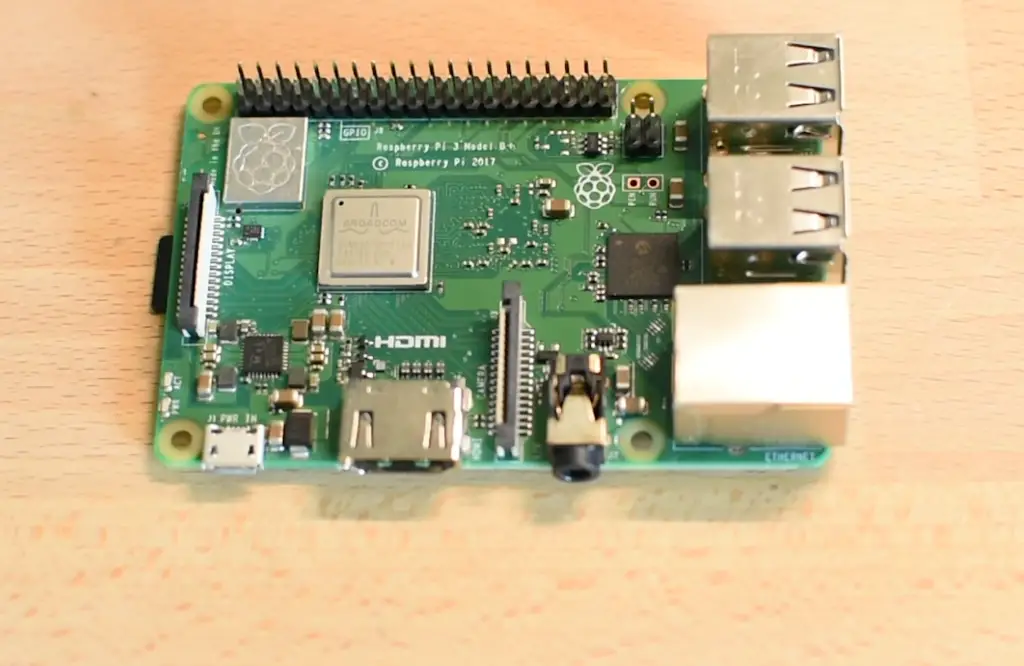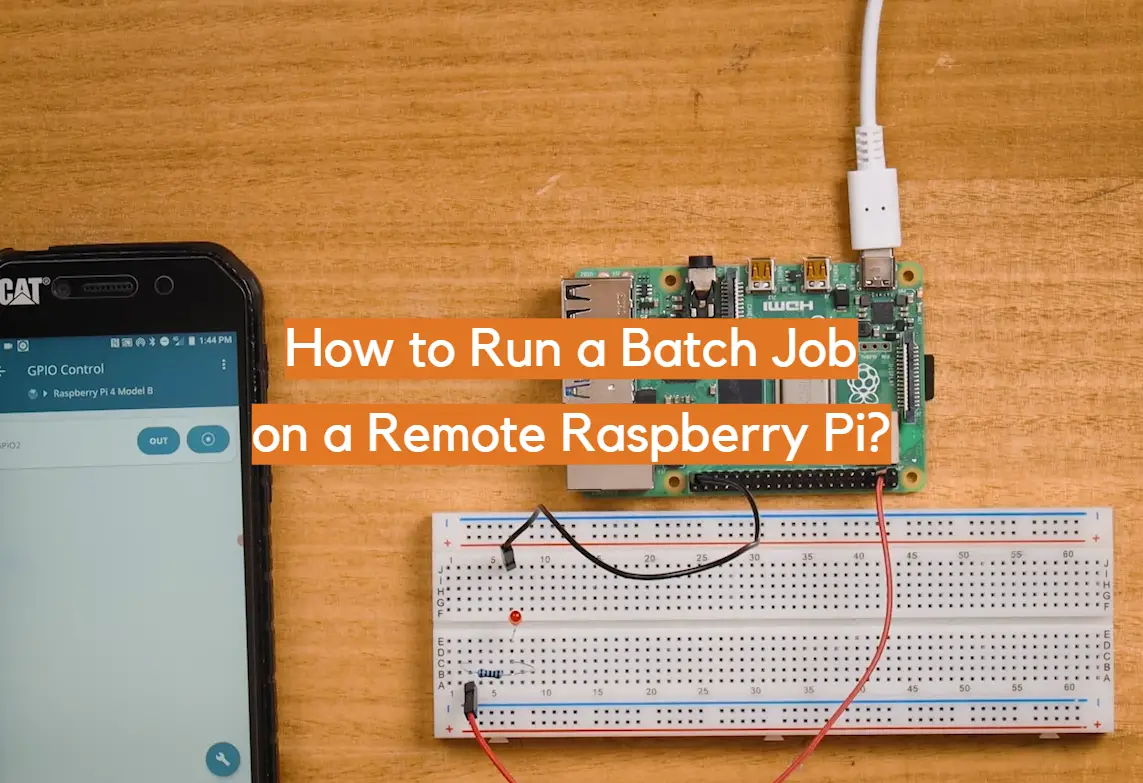Are you looking to supercharge your Raspberry Pi projects and liberate yourself from the constraints of physical access? Mastering remote batch jobs on your Raspberry Pi opens up a world of possibilities, allowing you to automate tasks, manage data, and streamline operations with unparalleled ease.
In this exploration, we'll dissect the art and science of orchestrating batch jobs on a Raspberry Pi from afar. This isn't just a technical exercise; it's a gateway to enhanced efficiency and control, whether you're overseeing a single device or managing a sprawling fleet. Consider the scenarios: automating data processing, managing remote servers, or building sophisticated IoT applications. The ability to execute batch jobs remotely empowers you to achieve more, from anywhere. This article will guide you through the essential steps, transforming a cool tech term into a practical skill.
Let's start by addressing a common practical application: Consider a scenario where your Raspberry Pi serves as a seedbox and NAS. Downloads are directed to an external hard drive connected via USB. The natural next step is to move these completed downloads to another external drive for backup. How do we automate this? The answer lies in understanding and implementing cron jobs, the scheduled workhorses of the Raspberry Pi.
- Vegamovies Streaming What You Need To Know Now
- Explore Fun Math Games Granny Unblocked Adventures Get Started
Here's a table outlining some key aspects of remote batch job execution on a Raspberry Pi. This is an excellent resource for developers and tech enthusiasts, outlining the benefits, use cases, and technologies involved. This information is presented as a summary of the core aspects of executing batch jobs on a remote Raspberry Pi, helping you organize data and manage the device more efficiently. This is a critical skill that enhances productivity in diverse computing scenarios.
| Feature | Description |
|---|---|
| Core Concept: Remote Batch Jobs | Automating tasks on a Raspberry Pi from a different location, usually using the internet. |
| Benefits | Enhanced Efficiency, Remote Access, Automation, Data Management, Streamlined Operations, and Saving Time. |
| Use Cases | Automated Data Processing, Remote Server Management, IoT Application Development, Seedbox/NAS management (moving downloaded files to a backup drive). |
| Key Technologies | SSH (Secure Shell), Crontab and Cron Jobs, Shell Scripting (Bash, etc.), Network Connectivity (Internet). |
| SSH (Secure Shell) | Provides a secure way to remotely connect to the Raspberry Pi. |
| Crontab and Cron Jobs | Allow for scheduling tasks to run automatically at specific times. |
| Shell Scripting | Used to create scripts that perform the desired actions. |
| Network Connectivity | Essential for the Raspberry Pi to be accessible over the Internet. |
| Example Scenario: Seedbox/NAS | Moving completed downloads from a primary hard drive to a backup drive, scheduled using cron. |
| Considerations | Security (using strong passwords, keeping software updated), Network Configuration (port forwarding, dynamic DNS), Scripting skills. |
The essence of remote batch job execution involves several key components. First, you need a secure method of accessing your Raspberry Pi. SSH (Secure Shell) is the go-to protocol for secure remote access, encrypting the communication between your computer and the Pi. Think of it as a secure tunnel through which you can execute commands. You'll need to enable SSH on your Raspberry Pi, usually through the raspi-config utility or by using a dedicated SSH server like OpenSSH. Then, you'll need to know the IP address of your Raspberry Pi (or set up a dynamic DNS service if your IP address changes frequently). Finally, you'll use an SSH client (like PuTTY on Windows or the built-in terminal on Linux and macOS) to connect.
Once connected, the real power comes into play: scheduling tasks. This is where the crontab and cron jobs come in. The cron daemon, a background process, runs on the Raspberry Pi and is responsible for checking the crontab file. The crontab file contains a list of scheduled jobs, or cron jobs, that the daemon executes at predetermined times. Each job is defined with a specific schedule (minute, hour, day of the month, month, day of the week) followed by the command to be executed. This enables you to automate tasks such as: moving files, running scripts, backing up data, or managing services, entirely hands-free. The cron daemon executes jobs with the same privileges as the user who added the jobs; so, if the `pi` user adds a cron job, it will run as the `pi` user.
- Parenting Insights Struggles Reallife Advice Tips
- Explore Somali Wasmo More On Telegram Tiktok Latest Updates
Let's translate this into a practical example: moving completed downloads. You can create a shell script (e.g., `move_downloads.sh`) that moves files from your download directory (e.g., `/mnt/downloads`) to your backup drive (e.g., `/mnt/backup`). Then, you'd use the `crontab -e` command to edit the crontab file and add a line specifying the schedule for your script. For instance, to run the script every day at 3:00 AM, you'd add the following line: `0 3 * /home/pi/move_downloads.sh`. After saving the crontab file, the cron daemon takes over, executing your script at the designated time.
Security is paramount. Remember to secure your Raspberry Pi. Use strong, unique passwords for your user accounts. Keep your system up-to-date by regularly running updates (e.g., `sudo apt update && sudo apt upgrade`). If you're exposing your Raspberry Pi to the internet, consider configuring a firewall (e.g., `iptables` or `ufw`) to restrict access to only the necessary ports. It's also a good practice to disable password-based SSH authentication and use SSH keys instead, creating an added layer of protection. Also, be aware of the potential risks when backing up a live system, which may not always be perfectly restorable.
Beyond the basics, the world of remote batch jobs offers exciting possibilities. Imagine automating data processing, such as image analysis or scientific simulations, running complex data analysis scripts, or managing multiple Raspberry Pis. You can use tools like `rsync` over SSH for efficient file synchronization or deploy scripts that monitor system resources and generate reports. Consider using tools like `screen` or `tmux` to run long-running jobs within persistent terminal sessions, enabling you to disconnect and reconnect without disrupting the execution.
This capability extends to IoT applications, where your Raspberry Pi can collect data from sensors, process it, and transmit it to a remote server, all orchestrated by scheduled batch jobs. This can include everything from automating data processing tasks to managing remote servers, or building IoT applications. The possibilities are limitless.
For instance, on a Raspberry Pi running as a seedbox and NAS, automated backups become a reality. You can create a script that moves completed downloads from the hard drive to a backup drive. Such scheduled automation ensures your data's safety and integrity. Similarly, you could write a script to monitor disk space, automatically delete old log files, or send you email alerts when certain conditions are met. These actions, automated through cron jobs, save time and effort, and create a self-managing system.
Remember that the command executed by the cron job runs with the privileges of the user who created the cron job. It is also important to note that when using cron jobs, the environment may be different than what you are used to when working in a regular terminal session. You should specify the full path to all commands and files within your script to avoid any unexpected behavior. Also, make sure the scripts are executable by using `chmod +x /path/to/your/script.sh`.
The journey of running remote batch jobs on your Raspberry Pi offers the potential to automate routine tasks, manage your data more efficiently, and unlock the full potential of your hardware. It is a skill that will prove valuable for developers, tech enthusiasts, and anyone seeking to optimize their digital workflow. You can enhance your capabilities and drive innovation by understanding the fundamental principles, secure your device, and experiment with the possibilities. The power to control and automate is at your fingertips; it is time to begin!
It is also important to note that tools like PuTTY for Windows and Xterm emulators provide interfaces for connecting to Raspberry Pi devices through SSH, while a command such as "le raspberry pi excutera le script python decompte.py toutes les minutes entre 23h et 23h59, tous les 31 dcembre." shows how to set up scheduled tasks for the Pi.
The provided information covers the process of transferring files from a Windows environment to a Raspberry Pi environment, and it demonstrates how to execute batch commands for file execution. The process is simple and has a lot of benefits.
For further insights into the world of cron jobs and remote server administration, consult online resources, forums, and the official Raspberry Pi documentation. You'll find extensive tutorials, troubleshooting guides, and examples that can help you refine your skills and tackle more complex projects.


